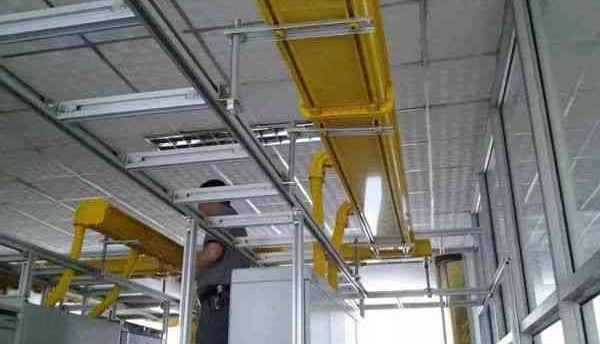Overview of Optical Cable Trays and Fiber Protection
Learn about the key features and materials used in optical cable trays for efficient and effective routing and protection of fiber optic networks. Find out how these trays ensure optimal performanc...
6/30/20242 min read


Overview of Optical Cable Trays
An optical cable tray is a system meticulously designed to protect and route fiber optic patch cords, cable assemblies, and other terminal devices. This system ensures that fiber optic networks maintain their integrity and performance by organizing and safeguarding the cables effectively. Additionally, the ducting solutions provided by optical cable trays offer ideal solutions for optical raceway requirements, boasting a pleasing appearance and easy maintenance.
Key Features of Optical Cable Trays
One of the standout aspects of optical cable trays is their high speed of installation and deployment. These trays are designed to be installed quickly, significantly reducing the time and effort required to set up fiber optic networks. Another crucial feature is the raceway flexibility that allows for adaptable routing paths to suit various network configurations.
Fiber protection is paramount in optical cable trays. They are built with strength and durability in mind, ensuring that the delicate fiber optic cables are shielded from physical damage and environmental factors. The materials used in these trays are often flame-retardant, rated V0, providing an added layer of safety. Moreover, the tool-less design of many optical cable tray products, including snap-on covers and hinged options, allows for quick and effortless installation and maintenance.
Materials Used in Optical Cable Trays
The construction of optical cable trays involves a variety of materials, each chosen for their specific properties and benefits. The straight sections of the trays are typically made from PVC (Polyvinyl Chloride), a durable and cost-effective material that offers excellent protection for fiber optic cables. Other plastic parts within the trays, such as connectors and brackets, are often made from ABS (Acrylonitrile Butadiene Styrene), known for its strength, toughness, and resistance to impact.
These materials ensure that the optical cable trays are robust, reliable, and capable of withstanding the rigors of daily use in various network environments. Their flame-retardant properties further enhance the safety and longevity of the fiber optic network infrastructure.
Conclusion
Optical cable trays play a crucial role in the management and protection of fiber optic networks. With their high-speed installation, raceway flexibility, and durable materials, they provide an efficient and effective solution for routing and safeguarding fiber optic cables. Whether used in large data centers or smaller network installations, optical cable trays ensure that fiber optic networks perform optimally and are well-protected from potential damage.
Songyin Kunshen
上海松隐坤申贸易有限公司
Quality, innovation, direct customer relationships, safer, efficient, sustainable
© 2024. All rights reserved.


